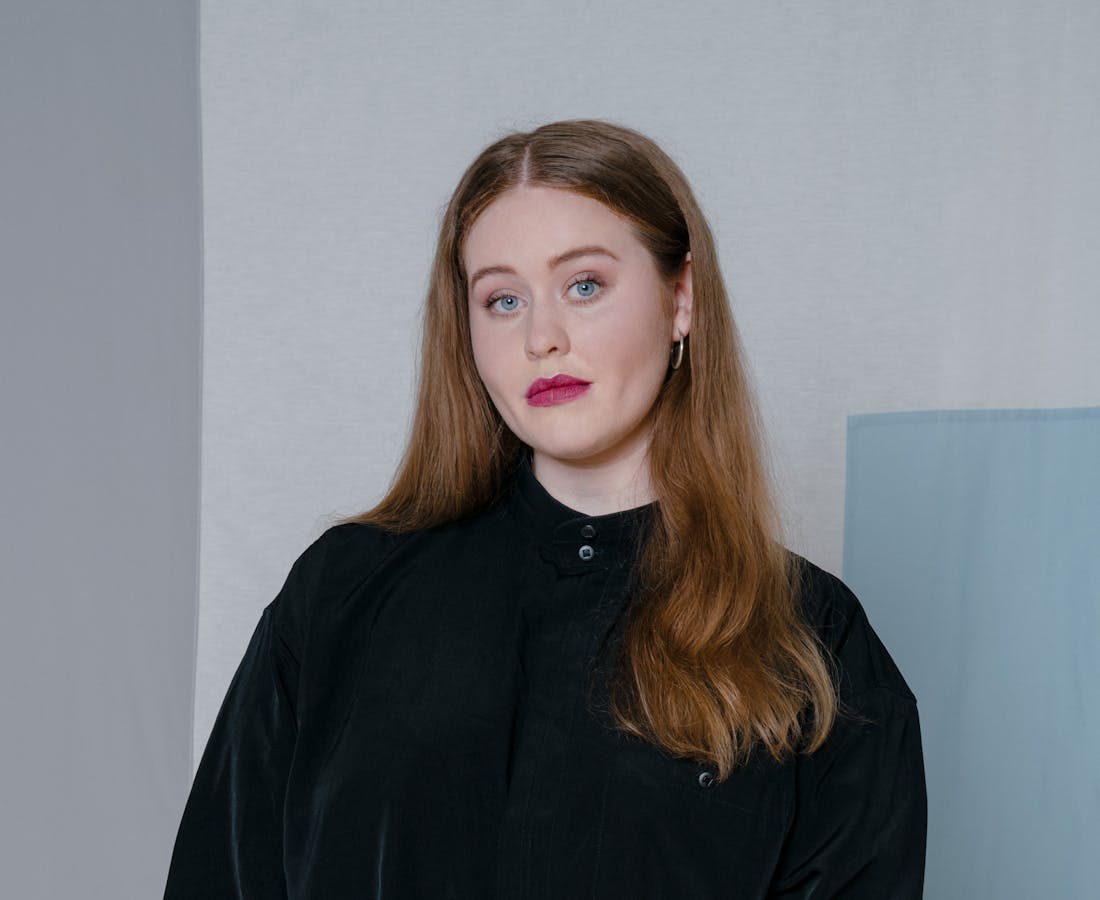Cornered Compositions

First published in HA Issue 09, 2019.
Fashion and textile designer Helga Lára Halldórsdóttir discusses her latest collection Cornered Compositions, which is based on her research into what she calls the spatial qualities of awkwardness. “The space always seeks to be still and the body always seeks to move, and the garment accompanies whoever wants to take it with them. I asked myself how I could combine these three key elements, body, garment, and space, and decided to integrate the spatial element into the garment, which ultimately clothes the body and redefines the space,” says Helga Lára Halldórsdóttir about her collection Cornered Compositions, featuring abstract clothing sculptures made from recycled fabric in the primary colours, red, yellow, and blue, which attracted the attention it deserves at this year's DesignMarch.

Many designers today work just like artists, but because their artistic medium is clothing they’re called fashion designers.
Where body meets space
The collection was Helga’s final project of her master’s degree at the Swedish School of Textiles, and it’s based on her research into what she calls “the spatial qualities of awkwardness.” She has been interested in the subject since she was a BA student studying fashion design at the Iceland University of the Arts.
“I found that I was really interested in how people behave when they feel awkward in enclosed spaces. Under such circumstances, many people prefer to stand in a corner than elsewhere in the room. The corner has the ability to embrace the body from two sides. Seen from the corner, the room goes from being two dimensional to three dimensional, and so I thought it was logical, based on that, to move the outer space into the three-dimensional world of the body,” says Helga.
Early in the process Helga set constraints for herself with regard to the use of materials and colour. “I began working with a specific colour story involving the primary colours, which I stuck with throughout the process. I also decided to use only remnant and surplus fabric that I got from textile shops and factories selling used fabric, many of which are based in the neighbourhood surrounding the school in Borås. In fact, the collection is made entirely of fabric that nobody wanted to buy or use. I also had certain criteria for the production of the corners. They are all made from square shapes, so no material goes to waste. I often use more than the average amount of material, but none of it goes to waste.”
She says, however, that the most important materials are the body and the space: “Ultimately, it’s the body that ties everything together.” In the design process, Helga relied heavily on video recordings to carefully document the work. “After trying a particular corner on myself, I watched the video and made note of the shapes that I found interesting. The shape that captures my attention often appears for only a split second, so I develop it into a lasting shape that the body can wear,” she says.




The space always seeks to be still and the body always seeks to move, and the garment accompanies whoever wants to take it with them. I asked myself how I could combine these three key elements, body, garment, and space, and decided to integrate the spatial element into the garment, which ultimately clothes the body and redefines the space.

A designer beyond design
Helga feels like she has perhaps distanced herself from fashion design as such. “I’ll always be a designer,” she says, “but I’ve just become more interested in other forms of design and art. Many designers today work just like artists, but because their artistic medium is clothing they’re called fashion designers.”
Although she created this piece on her own, Helga now plans to develop the project further in collaboration with others. “At the moment, I’m working with two dancers. The idea is that the corner garments, and the awkwardness that I have created, will completely shape the movements that the dancers make. So it’s yet another embodiment of the relationship between the body, the space and the garment, as a whole.”
In general, Helga says she plans to do more research and cross-disciplinary collaboration. “To me, collaboration is the future, and I recommend it to everyone. Although it maybe doesn’t work out every time, you always learn something in the process, and you take something away from every collaboration. It’s so great to work with other people who can tell you when you’ve got yourself into a load of nonsense, or with someone who adds to your nonsense, which is also really important in my opinion.”


